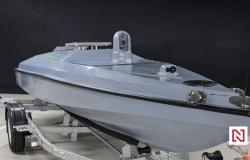History knows no ifs. It is true, however, that the people of Slovakia did not get a chance to express themselves about their fate in the referendum. They were attached to the Czech lands and nobody talked to them about it. In the aforementioned work, Professor Rychlík briefly stated on page 137: “I think in 1918 the Hungarian option was actually more likely.” He further justified it: “The Hungarianization pressure was enormous, but what did it really mean for a peasant on Orava or Kysuci.” That’s right, the Slovak farmer didn’t care if he was ruled from Prague or Budapest. However, he knew what he could expect from the Hungarians, while he did not know the Czechs.
Then, shortly after October 28, when limited fanatics destroyed the Marian Column in Prague’s Old Town Square, it was a severe shock for the predominantly Catholic Slovaks. Of course, the Hungarians took advantage of this and told them: “look, you want to be with those godless “guards” who hate the Maria doll – the patron saint of Slovakia. Better stay with us. There were mistakes on our part, but now we guarantee you autonomy.” At that time, ordinary Slovak villagers used to express themselves in the style: “we were under the Hungarians, now we will be under the Czechs, and if the Hungarians come again, we will be under them again.”
The difficult situation in Slovakia and the lax attitude of many Slovaks towards Czechoslovakia are well described by publicist Ferdinand Peroutka in his seminal work Building the State. In the first part, he recalls that when the minister in charge of the administration of Slovakia, the evangelical Vavro Šrobár, arrived in Žilina in December of the eighteenth year with his companions, no one welcomed them, they had to walk from the station and carry their suitcases themselves, they had neither accommodation nor places for office.
When Šrobár decided to move his “Slovak government” to Bratislava in early February 1919, the commander of the Czechoslovak military garrison there refused to guarantee its safety, warned of dangerous consequences and advised him to stay where he was. It should also be added that the transfer by rail almost failed because the Hungarian railwaymen refused to send Šrobár’s train. Therefore, their Czech colleagues had to be called in their place.
The majority of the Hungarian and German population in the Slovak metropolis had their hatred for the Czechoslovak Republic. they openly showed the state. So on February 11, a strike broke out against the new government, waiters also protested, tradespeople closed their shops, and workers at power plants and gas plants went on strike. Crowds of disaffected people demonstrated in the streets, the army intervened, shots were fired from both sides, there were dead and wounded. The situation in Slovakia was very wild at the time and the enthusiasm for the new state was far less than in the Czech Republic. Only the more educated and nationally conscious Slovaks, who, of course, formed a minority, honestly identified with him.
Slovakia was a part of Hungary for a thousand years, and it was connected with Hungary not only by political, but also by key trade and economic ties. It didn’t even have efficient transport connections with the Czech countries, the only high-quality route was the Bohumín-Košice railway. The monorail line between Břeclav and Bratislava had a low capacity at the time, it was essentially a local train. Many Slovaks were therefore logically afraid of severing functioning economic relations. It is also a fact that food requisitions did not take place in Hungary during World War I, as in the Austrian part of the monarchy. Therefore, the Slovaks did not experience the same hunger as the Czechs, as the Hungarian government did not introduce food stamps and allowed an unlimited supply of food. The rationing system was only introduced in Slovakia by Czechoslovakia, which was abolished only in 1921. Two years earlier, the food supply situation in Slovakia was very difficult, and in some areas there was even talk of starvation. It is clear that this did not contribute to the popularity of Czechs among Slovaks.
Certainly, the Czechs helped Slovakia a lot in later times, for example in the development of Slovak education, industry, etc. There can be no dispute about that. However, it is not worth hiding the historical truth that the beginnings of the common state of Czechs and Slovaks were very complex and complicated. The Slovaks had a more measured and reserved attitude towards him.
State Building I and II, Ferdinand Peroutka, Lidové Noviny publishing house, Prague 1991
Vladimír Kučera/Jan Rychlík, History, myths, timetables, Vyšehrad publishing house, Prague 2015
History of Slovakia, Jan Rychlík a kolektiv, Vyšehrad publishing house, Prague 2024
Tags: Slovaks prefer Hungarians Czechs
-





